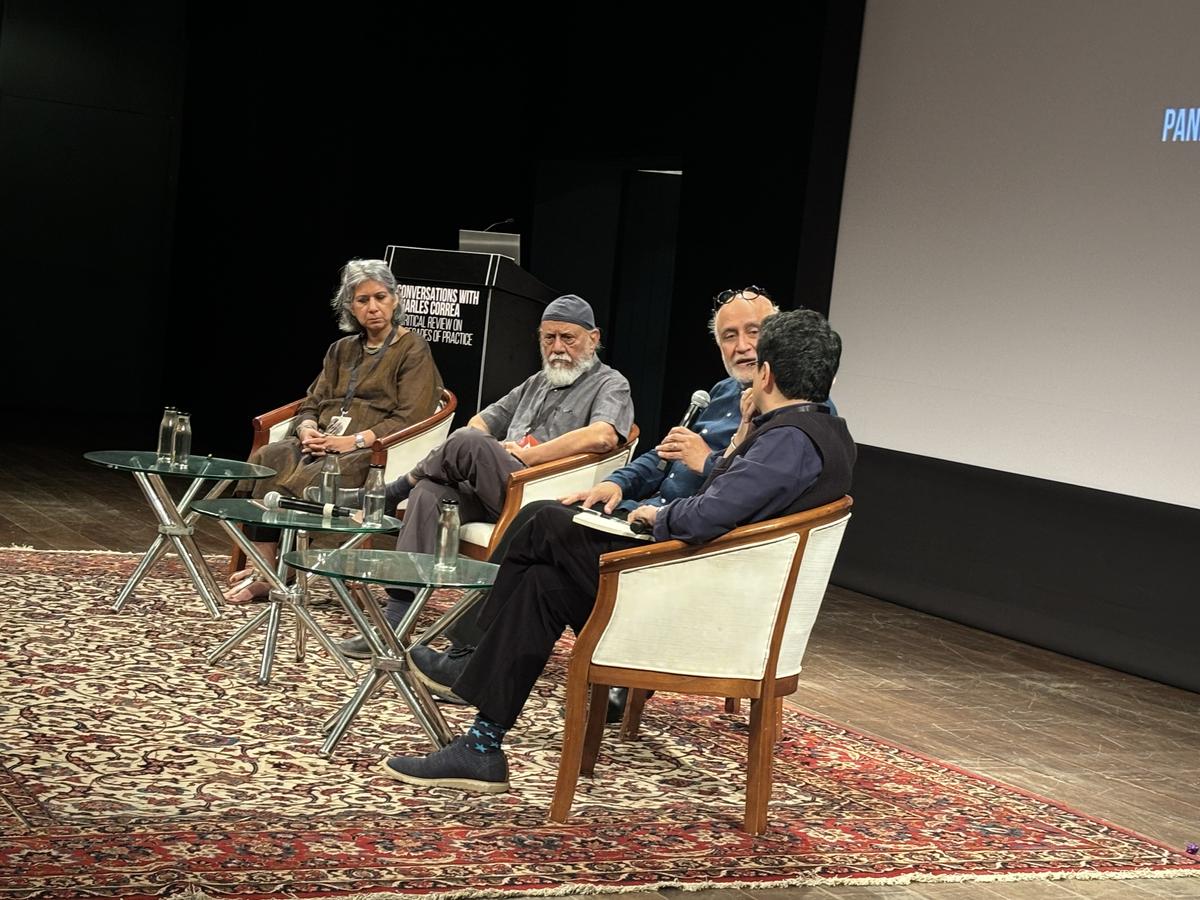Delegates launch Charles Correa’s biography titled ‘Citizen Charles’ authored by architect Mustansir Dalvi.
| Photo Credit: Special Arrangement
When talking about building, calling architecture “human occupation” is uncommon, but that is what renowned architect and urban planner, Charles Correa believed and tried to reflect through his designs. The documentary titled Volume Zero played at Z-axis Conference on Saturday put light on his lifetime work which was characterised by people and climate.
The sixth conference curated by Charles Correa Foundation (CCF) in conference titled Conversations with Charles Correa: A Critical Review on Six Decades of Practice, critically reflected on Correa, his life, and 60 years of his professional career as an architect.
President of CCF and daughter of Charles Correa, Nondita Correa Mehrotra calls his father and mentor a ‘humanist’. Ms. Nondita said,”Charles was modernist but not in stylistic preference, but for the clarity. He tried to search clarity through his designs, he put people in front and centre during the designing process. He believed in importance of humane and democratic society.”

The day also marked a launch of his biography titled Citizen Charles authored by architect Mustansir Dalvi.
The two day conference brings together 21 multidisciplinary scholars and practitioners to discuss his buildings, urbanism, writings on cities and architecture, and his role in global debates about architecture. The speakers discussed various milestones of his life, narrated the stories behind his designed and analyse the concepts of his buildings, which are counted as changing the landscape of architect in global South.
In the event, architect Rahul Mehrotra called him “Father of modern Asian architecture”. He pointed out his approach towards constructing a structure was from four perspectives- third world, democracy and equity, building and idea, and post modern exploration. Giving instances of his work- Gandhi Memorial Museum(1963), Bharat Bhavan, Jawahar Kala Kendra (1992), Madhya Pradesh Vidhan Bhavan, Mr. Rahul said, “His buildings were message of inclusivity, and well thought from climate perspective.”
Charles is also known for his understanding of housing needs of lower-middle class and recycling of empty buildings in Mumbai. Today’s Navi Mumbai is credited to his name, he proposed New Bombay (Navi Mumbai) to government by showing film “City on the water”, showing sufferings of people in Mumbai. The proposal was accepted and he later become Chief Architect for CIDCO.
Published – October 12, 2024 03:51 pm IST